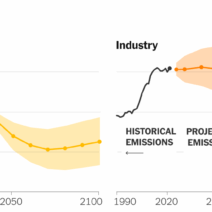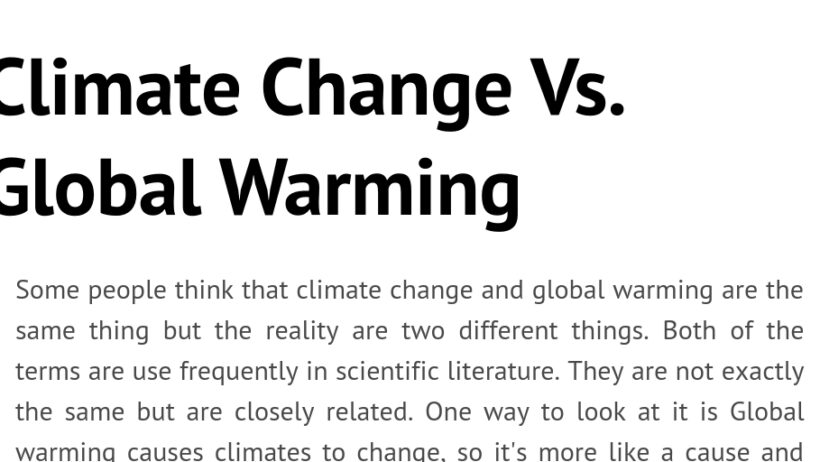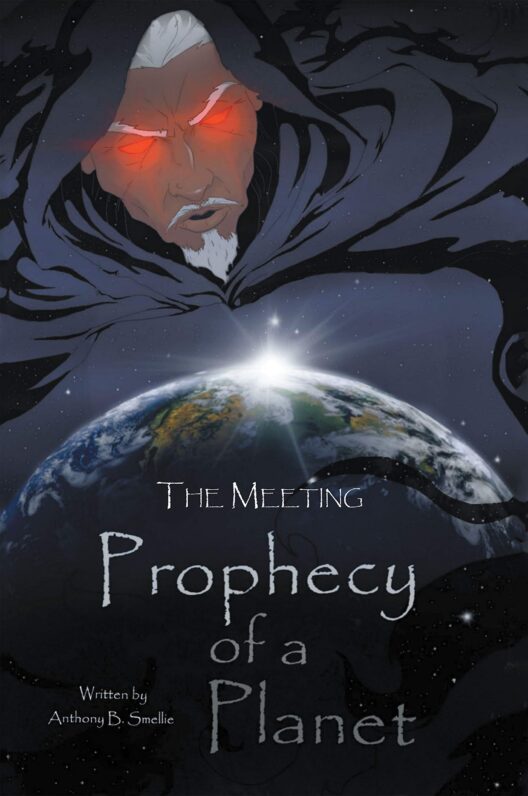In the grand tapestry of our planet’s ecological fabric, two terms frequently emerge: global warming and climate change. While they are often employed interchangeably, delving deeper reveals nuances that are essential for understanding the elaborate dance of our Earth’s atmospheric systems. Picture global warming as a subtle, creeping thief, surreptitiously lifting the equilibrium of our climate, while climate change embodies the expansive canvas, illustrating a multitude of transformations that beckon our attention.
Global warming, fundamentally, refers to the quantifiable increase in Earth’s average surface temperature, attributed predominantly to the enhancement of the greenhouse effect due to anthropogenic emissions of greenhouse gases. Picture the atmosphere as a delicate greenhouse, with transparent walls allowing sunlight to pour in yet trapping the heat. This phenomenon, while largely rooted in temperature increments, is indeed a clarion call for urgency, invoking a sense of immediacy that portends dire repercussions for our planet.
On the other hand, climate change encompasses a broader spectrum of fluctuations—this includes variations in precipitation patterns, shifts in weather extremes, and alterations in oceanic currents. Imagine climate change as a turbulent sea, with waves of unpredictability crashing against the shores of human existence. Thus, while global warming sets the stage for this inexorable play, climate change acts as the multifaceted performance itself, portraying a wide array of climatic phenomena both gradual and abrupt.
The dichotomy between these two terms is not merely academic; it has profound implications on public perception, policy making, and mobilization of resources to mitigate catastrophic outcomes. Misunderstanding this relationship might be likened to mistaking a mere chapter for an entire epic saga. Labeling all climate-related anomalies solely as global warming can render the discourse superficial, neglecting the intricate weave of atmospheric dynamics influencing different regions at varying scales.
Consider the metaphor of a symphony: global warming serves as the foundational melody—the primary theme that runs throughout the performance. In contrast, climate change represents the various crescendoes and diminuendos, the shifts in tempo and tone that affect how we experience the music. The world is not merely heating; it is also experiencing alterations in seasons, biodiversity, and the delicate interdependencies of ecosystems.
At this juncture, it is vital to highlight the socio-economic ramifications of these phenomena. Countries around the globe are not uniformly affected by climate change; rather, they experience a patchwork of impacts influenced by their geographic, economic, and social landscapes. Some regions may confront arid landscapes, burdened with droughts that throttle agriculture, while others might be inundated with torrential rains, breeding floods that take a heavy toll on infrastructure and livelihoods. Here, the intricacies of climate justice emerge, glimmering like a beacon, reminding us that the ramifications of climate challenges are disproportionately distributed, often exacerbating existing inequalities.
Moreover, the terminology used to describe these challenges shapes our collective consciousness and shapes policy. To pronounce the term ‘global warming’ evokes a direct image of a heating planet, whereas ‘climate change’ may engender a sense of gradual alteration, a slow twist of fate rather than an impending crisis. Consequently, the battle for semantics becomes part of a larger struggle for engagement, advocacy, and action.
Amidst this lexical landscape, scientists and activist communities strive to illustrate the critical connection between human behavior and these climactic shifts. The incessant burning of fossil fuels, deforestation, and industrial processes release copious amounts of carbon dioxide and other greenhouse gases, which act like a diurnal blanket encompassing our planet. The resulting effect is analogous to an overmedicated patient whose symptoms are masked, yet the underlying ailment persists unabated. Addressing this requires both systemic change and individual accountability, a concerted effort that demands robust dialogue and innovative solutions.
Transitioning from this examination of terminology and concepts, one arrives at the imperative of education. In the face of misinformation, fostering awareness about the distinction between global warming and climate change is paramount. Misconceptions can lull societies into complacency, wrapped in the fallacy that climate discourse is merely an environmental issue, when in fact, it is intricately woven into the fabric of public policy, health, and economic stability.
Take heart in the fact that humanity has a tremendous capacity for resilience and ingenuity. The rise of renewable energy sources illustrates the capacity for change, reflecting an awakening from the slumber of fossil fuel dependency. Innovative technologies—solar panels, wind turbines, and biogas systems—are becoming ubiquitous, signifying a paradigm shift toward sustainability. Herein lies the escapade of hope, the lulled narrative of humanity striving not just to combat global warming, but to adapt to the broader phenomenology of climate change.
Ultimately, it is critical to comprehend not only the definitions but also the immense implications of both global warming and climate change. Knowledge sparks action; understanding fosters empathy. As we traverse this landscape fraught with complexity, let us be vigilant, conscientious stewards of our planet. The essence of the debate lies not in synonymy but in the awakening of collective responsibility—a unification of purpose to safeguard the very habitat that nurtures our existence. The fight against climate adversity is not a solitary venture; it requires an ensemble performance, harmonized for resilience, adaptation, and transformative growth.








